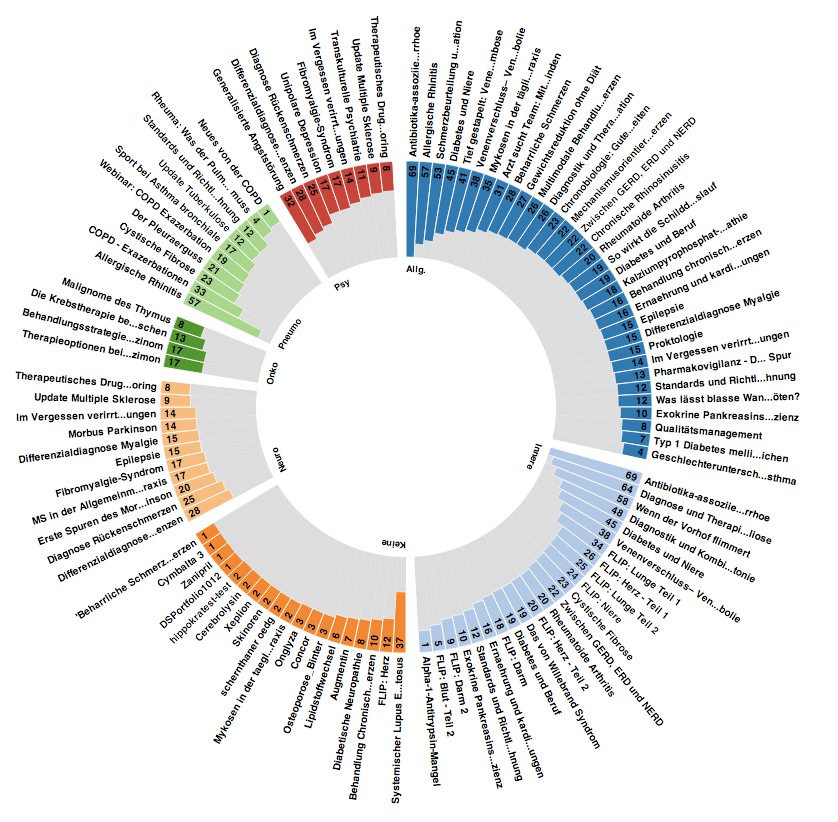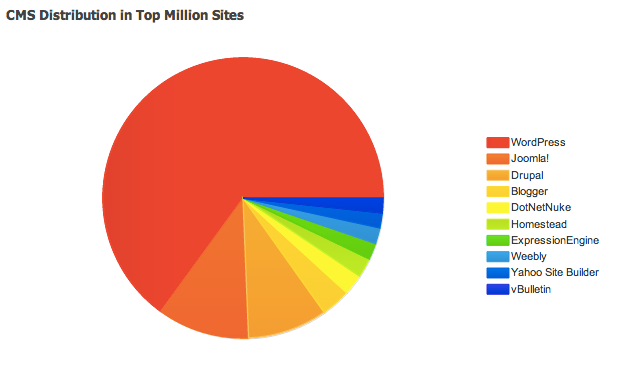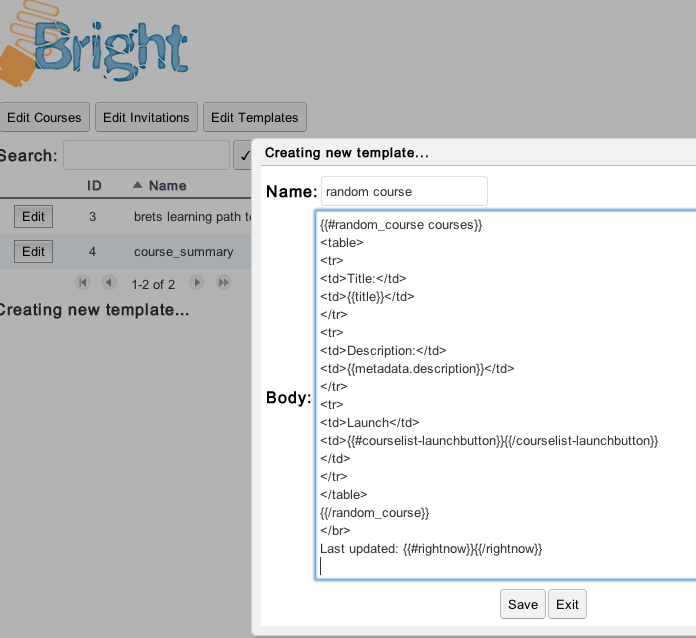Archive for the ‘News’ Category
In the Aura lab we’ve been toying with visualizations; and this was just a little proof of concept we whipped up for a customer.
Each spoke of this wheel is a course, and the colors correlates to categories defined in the Bright metadata. Then the length of the bar is number of times the course has been completed, with the title around the outer edge.

After a long amount of foot dragging …. Bright now polls and stores xAPI/TinCan Statements. What is in all of this data? That remains to be seen; but for the moment, at least there’s a somewhat consistent structure to it.
In the past, we’d have to go spelunking into a course production tool’s activity storage format, which usually turned into some sort of bizarro XML-parsing exercise.
The first step of what is sure to be a long adventure.

Bad blogger; I’ve been distracted and not doing my blog-job!
So much has happened with Bright we barely have time to tell anyone about it.
So here’s something new, its the Bright API Doc-ed via github!
Per the Dan Marsden blog:
I spent a lot of time discussing the opportunity to run a crowd-funded project to complete SCORM 2004 in Moodle but it’s hard to define a fixed figure that would allow us to complete the project and I wonder if such a large amount of my time could be spent on projects that are more current.
Full support for SCORM 2004 is already available in Moodle by using the Rustici SCORM cloud plugin for Moodle and I think it is more cost-effective to purchase a subscription to their hosted solution which is much more stable/reliable and feature rich than what we could provide directly in Moodle anyway.
Looking to buy or rent an LMS? Could a Bright-based WordPress system fit the bill?
To understand this, it first helps to understand, “What is WordPress?”:
What is WordPress?
For businesses, WordPress is an extremely vertatile technology that helps them maintain content, engage in social media, perform well in search engines and minimize out of house costs.
How popular is it?
As can be seen above, WordPress is the top CMS platform used on the internet today. It does comprise more websites than every other CMS platform combined.
In many ways the popularity of WordPress can be attributed to :
- The flexibility of the platform is renowned.
- Nearly 25000 available plugins, the vast majority free.
- 1000s of available themes.
How can WordPress be used as a learning site?
scorm.com has produced a nice case study on how WordPress can be used effectively as an alternative to commercial LMS systems.
How do I do it?

Some assembly required
The degree of flexibility of the WordPress platform, plus the vast array of free plugins for the platforms, means the acquisition process of a WordPress learning site is slightly different than the procurement process for a shrink wrapped LMS solution.
The question shifts from “does this LMS support this feature?” to “how easily will our WordPress-based learning site support this feature?” The vast number of sites that run WordPress insures that in most cases, whatever you want to do with your WordPress site, somebody somewhere has already done it. Flexible authentication, social media integration, shopping carts, event management, polling, sharing, chat, you name it.

The Cream Rises to the Top
Since most WordPress features “snap-in” via plugins, you will find that competition between competing implementations of certain features mean that in many cases, there are several alternatives available to deliver a particular feature.
More choice tends to infuse a drive for quality as competing plugin developers compete to be the leader in their respective spaces.
The End Result
Constructing a learning site based on WordPress, is about acquiring highly flexible, customizable, and low cost infrastructure that can grow as you grow.
One of the trends we see in LMS acquisition that if you survey all the stakeholders and ask “what features must our LMS have?”, you can end up with a pretty long list.
But after going through the time and expense to acquire an LMS system, you may find that in practice you don’t use or need all of the features that you spent your time and money acquiring. In some cases this feature creep is driven not by an immediate need, but a sense that “if we don’t get it now, we won’t get later”. In the world of vendor lock-in, this is a real concern.
Building a WordPress-based learning system is different. The easy to integrate environment and proliferation of plugins and expertise for the WordPress platform means even if you don’t get it now, you can have it later (if you want it).
For some organizations, it is liberating to move to from “what features do we need anytime, forever” to “what do we need today?” And for many, that means less time and less money.
How can Bright help?
Bright is an innovative platform for integrating trackable e-learning into web construction platforms like WordPress.
Bright enables many functions that are typically found in a commercial LMS system to be integrated and embedded in a WordPress site. And Aura can provide the expertise to move you from your requirements document to a functioning learning site in short order.
Find out more about Bright here.
Bright
Find out more about Bright
Find out more about Bright

Here’s a short video describing how to configure a Bright embed code or widget to dynamically refresh itself after a certain interval.
Template for Random Course
Here’s the template code from the demo, created via the Bright Template Editor from the WordPress administrators console:
Embedder Shortcode From Video
[bright template=”random course” type=”courselist” refresh=”1000″ class=”none”]
[/bright]
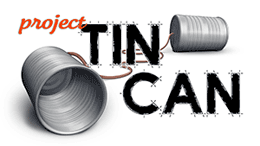
Sounds easy right?
Not so fast!
The state of the state is that how exactly to do this is yet to be defined.
This means for TinCan adopters, our recommendation is to hold fire for the moment.
See also:
https://github.com/adlnet/xAPI-Spec/issues/170
If you read through this thread, you can see its pretty much TBD at this point although Rustici does have a recommendation.
Also:
https://github.com/adlnet/CMI-5_Spec_Current/blob/master/cmi5_runtime.md#content_launch
https://github.com/RusticiSoftware/launch/blob/master/lms_lrs.md
I was asked an intriguing question during a meeting yesterday:
Can you send us 5 or 10 sites that you like, just to inspire us? You can include a basketball site! (I’d already revealed my basketball obsession).
Interesting question and a bit of a challenge.
So here’s what I’ve got.

http://medonline.at – This is a case study (from my perspective) on how to integrate trackable e-learning into “something else”. Learners take courses and interact with the modern, non-tracked content “all in the same place”. Yes they are an Aura customer.

Google Circa 1999
https://www.google.com/ – always a classic. I prefer the circa 1999 or 2000 edition:
http://web.archive.org/web/20000229040250/http://www.google.com/
Clean and simple. I still think this is my all time favorite web page. It came at a time when people were trying to jam as much as possible onto their page, refreshing to see something going the other way. Compare to yahoo! from the same period:
http://web.archive.org/web/20001207164500/http://www9.yahoo.com/
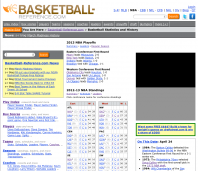
Basketball Reference
This is a great basketball website: http://www.basketball-reference.com/
Again, I love the “clean” approach. Some nice programming went into it. Surf around and a certain elegance will manifest itself.

Bright Product Page
My new favorite web page: https://www.aura-software.com/software/bright/
OK … that’s my web page. But I still like it. I used gliffy to create the top image (gliffy.com) and we used the WordPress shortcode API (http://codex.wordpress.org/Shortcode_API) to make generating the “image/text” blocks a snap. This is something that is extremely powerful in WordPress that can make it easy for non technical user to generate beautiful web pages.
The shortcode API came in very handy when building the Bright plugin for WordPress; too bad Drupal doesn’t have the same.
http://flipboard.com/ – for mobile devices only. Flipboard is game changer for delivering content. Time included Flipboard in its list of “The 50 Best Inventions of 2010” and Apple named Flipboard “iPad App of the Year.”

Wired Magazine
http://www.wired.com/ – Wired has really pioneered the unification of print and digital edition magazine publishing. I was a print subscriber, and they moved me to a digital subscriber. Since the New Yorker has adopted the same platform, I am now a New Yorker subscriber (after letting my print subscription lapse after many years because it was just too much paper). (http://www.newyorker.com/). If I am on a desert island and I can only receive one magazine, can it be anything but the New Yorker?

538 Blog
http://fivethirtyeight.blogs.nytimes.com/ – Greatest political blog of all time? I think Nate Silver has to be put into the blogging hall of fame. For the 2012 election, his blog was the silver bullet into the heart of the conservative echo chamber bugbear.
Generally speaking, other than their terrible attempts at paywall implementation, the New York Times has done a good job of integrating modern web technology without losing the “old school” feel that is part of the NYTimes brand.
Back before TinCan, you could make a SCORMCloud API call like this:
http://cloud.scorm.com/api?method=rustici.registration.getLaunchHistory &appid=myappid®id=myreg001
and you get a nice XML document like this:
<launchhistory regid="e222daf6-6005-4344-a07e-0aaa46b21dc9">
<launch id="c7f31a43-706a-4f43-8ab9-ebbf0dde4cbc">
<completion>complete</completion>
<satisfaction>failed</satisfaction>
<measure_status>1</measure_status>
<normalized_measure>0.2</normalized_measure>
<experienced_duration_tracked>2628</experienced_duration_tracked>
<launch_time>2011-04-05T19:06:37.780+0000</launch_time>
<exit_time>2011-04-05T19:07:06.616+0000</exit_time>
<update_dt>2011-04-05T19:07:06.616+0000</update_dt>
</launch>
<launch id="fc80087b-0fde-4263-8a89-29bee96eb65a">
<completion>unknown</completion>
<satisfaction>unknown</satisfaction>
<measure_status>0</measure_status>
<normalized_measure>0.0</normalized_measure>
<experienced_duration_tracked>2628</experienced_duration_tracked>
<launch_time>2011-04-05T19:15:51.177+0000</launch_time>
<exit_time>2011-04-05T19:15:59.450+0000</exit_time>
<update_dt>2011-04-05T19:15:59.450+0000</update_dt>
</launch>
<launch id="ffd2d304-439c-4c59-8be8-5d3fc1eb3f92">
<completion>complete</completion>
<satisfaction>failed</satisfaction>
<measure_status>1</measure_status>
<normalized_measure>0.27</normalized_measure>
<experienced_duration_tracked>10223</experienced_duration_tracked>
<launch_time>2011-04-05T19:16:07.214+0000</launch_time>
<exit_time>2011-04-05T19:17:25.294+0000</exit_time>
<update_dt>2011-04-05T19:17:25.294+0000</update_dt>
</launch>
</launchhistory>
If you been loading TinCan courses into SCORMCloud, you may have noticed that you no longer get any data from this!!!!
For example, we now just get this:
"<?xml version='1.0' encoding='UTF-8'?>\n<rsp stat='ok'><launchhistory regid='DiabetischeNeuropathied648d063-05b7-43e3-8b67-57568e329f4a-f59356563f5fd7e6104fe03d870c5007' /></rsp>"
So what’s the story? A lurking TinCan-ism that doesn’t match to SCORM? Probably.
So here’s the response from support.scorm.com ….
The Launch history, as it lives today, is focused around the SCORM API calls that are made by the content. Because the SCORM API is part of the SCORM player we have an opportunity to record those calls at the time they happen and format them into a readable log. For TinCan there is no player. This is a boon for content creators because it gives them far more freedom with their content than SCORM did but it has some limitations.
Those limitations all exist around the lack of a player for tinCan content. TinCan content exists in the browser outside of a player and sends statements back to some endpoint via existing http protocols which can’t be intercepted.
What this means is that you have two “views” of what might be considered launch history:
1) Statement Viewer – Statement viewer can show you all of the statements related to a registration. This represents all of the communication between the content and the ScormEngine that was *saved*. The only exception for this would be the state (replacement of suspend data) data which we only save the most recent value and don’t display in the statement viewer.
2) Browser Debug tools – Obviously these tools are only going to be useful when you’re testing a course live but they will provide more information than the statement viewer. Because all communication in TinCan will be handles by simple HTTP POSTS, PUTS and GETS you should be able to see all the successful and unsuccessful API calls including Statements and State.
This sort of illustrates what I’ve been saying to a few customers. If you don’t have a good reason to publish your course packages in TinCan format, SCORM packages will be a smoother landing, at least for the time being. There are a few reason for this….

Poor SCORM. Its a bit of an elearning standards whipping boy, but the reality is it works (mostly).
I say mostly because if you have a dodgy network connection, it might not work too well actually.
We have a prospect for Bright who is looking to “syndicate” their content and this is an interesting use case for Bright and we do this quite well.
But while I was discussing it with them, I got to say something really nice about SCORM that I want to share:
“So I’d say if you want a semi-easy path to content syndication, SCORM packages are actually a good solution (I finally got to say something good about SCORM), because it completely encapsulates the course and it can now be dropped into any SCORM compliant container.”
Thank you SCORM!
-bret
